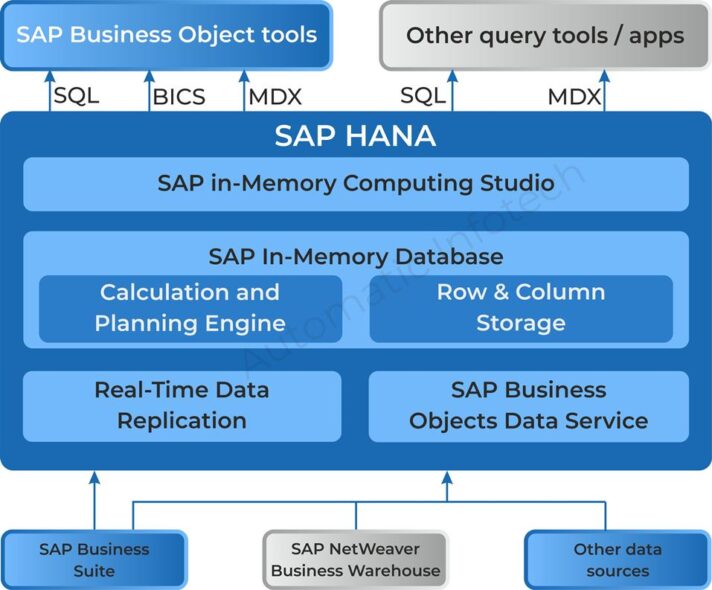SAP HANA Modelling
- SAP HANA Modelling is an activity to create information view. It is similar to dimension, cube of BW. This information view is used for creating the multi-dimensional data model
- SAP HANA is a combination of software and hardware innovation to process huge amount of real time data
- Based on multi core architecture in distributed system environment
- Based on row and column type of data-storage in database
- Used extensively in Memory Computing Engine (IMCE) to process and analyze massive amount of real time data
- It reduces cost of ownership, increases application performance, enables new applications to run on real time that were not possible before
- Prerequisites
- SAP ECC / S/4 HANA
Typical Data Flow of SAP HANA

Key Functionalities - SAP HANA
Need for SAP HANA
Today, most companies respond quickly to market changes and new opportunities. A key to this is the effective and efficient use of data and information by analyst and managers.
HANA overcomes the limitations mentioned below −
- Due to increase in “Data Volume”, it is a challenge for the companies to provide access to real time data for analysis and business use.
- It involves high maintenance cost for IT companies to store and maintain large data volumes.
- Due to unavailability of real time data, analysis and processing results are delayed.
Benefits
- Speed business discovery and innovation.
- Enhance visibility and responsiveness of core business processes.
- Deliver high-speed, Big Data analysis to all levels of the organization.
- Compete as a Real-Time Business Lead with a new business platform.
- Analyze information in real-time on large volumes of non-aggregated data.
- Minimizes data duplication.
AUTOMATIC'S SAP HANA Modelling - Consulting and Support Services
- Delivering Effective Solutions using Business Suite on HANA
- Reporting Integration with BOBJ Tool set
- Strategy and Roadmap
- SAP HANA Installation & Modelling
- Installation, configuration, and provisioning
- Base table modelling and optimization
- Content modelling: Attribute, analytical, calculation views
- SAP HANA Real-Time Analytics
- Data Modelling and Transformation
- Integration with backend Data sources, including SDA and SLT
- Front end integration with Lumira and BOBJ tools
- SAP HANA Predictive Analytics
- Data Modelling and Transformation
- Integration with backend Data sources, including SDA and SLT
- SAP Predictive Modelling – Agile Scrum approach